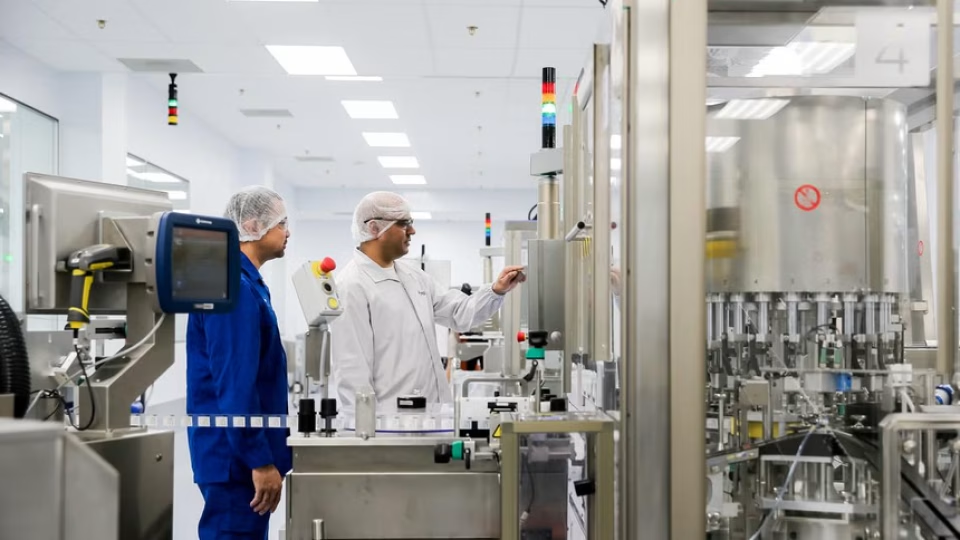February 4, 2025
SINGAPORE – Singapore’s manufacturing sector – like most of its Asian counterparts – is bracing itself for the impact from a looming trade war triggered by US President Donald Trump’s recently announced tariffs against key trading partners China, Canada and Mexico.
The purchasing managers’ index (PMI), a barometer of the sector, dipped 0.2 point in January to 50.9, down from December’s 51.1 points.
Readings above 50 indicate growth; those below point to contraction.
While electronics remained the main driver, its PMI reading also slipped by 0.3 point to 51.1, according to data from the Singapore Institute of Purchasing and Materials Management on Feb 3.
In the region, the slower growth in factory activity rippled across most of Asean, as well as in the North Asian economies of China and Taiwan. Notably, factory activity in Malaysia, Thailand and Vietnam is likely to remain in contraction.
Only data from South Korea and Indonesia pointed to faster growth ahead.
OCBC Bank chief economist Selena Ling said the implications of Mr Trump’s tariffs are significant because their scope is “broader than under Trump 1.0 and will have the potential to disrupt – at least in the short term – the highly integrated supply chains, such as those in the auto and energy sectors”.
She added: “Singapore – as a small open economy – may not be immune to the risk of an escalating trade war, notwithstanding our free trade arrangement with the US.”
Apart from the tariffs, experts also pointed to several other factors, including Chinese New Year, which shortened the number of working days in January; manufacturers increasing their output towards the end of 2024 in anticipation of the tariff announcement; and slower growth from the major economies, including China, Europe and the US, which had hampered global demand.
Maybank economist Brian Lee said the PMI declines “could reflect a slowdown in activity during the Chinese New Year holidays, but could also be an early signal that front-loading momentum is starting to ebb”.
For Singapore, the latest expansion marks the 17th consecutive month of growth for the overall manufacturing PMI and the 15th consecutive one for electronics.
Most sub-indexes for both the overall and electronics PMIs posted similar slowdowns, with only the sub-index for stocks of supplier deliveries in the overall PMI falling into contraction.
In contrast, stocks of input purchases as well as stocks of finished goods improved for both the overall and the electronics PMIs.

OCBC’s Ms Ling said the increase in the two sub-indexes could be “a harbinger of hoarding in anticipation of tariffs”, while the contraction in stocks of supplier deliveries may be “a predictor of possible supply chain problems”.
Looking ahead, economists appeared divided on how Singapore’s economy would be affected by the still unfolding impact of the Trump tariffs.
Ms Ling said: “It may be too premature to tweak our 2.2 per cent gross domestic product (GDP) growth forecast for 2025, even though the external trading environment has turned more cloudy.”
In comparison, Maybank’s Mr Lee is forecasting a moderation in GDP growth “to 2.6 per cent this year, down from the 4 per cent flash estimate in 2024”.
Meanwhile, Associate Professor Goh Puay Guan, from the NUS Business School’s department of analytics and operations, said: “The trends to watch in the months going forward would be whether the recently announced Trump tariffs have any impact, and how much of the regional trade continues to grow and adapt.”
DBS Bank economist Chua Han Teng also called for vigilance beyond the very near term. “The potential intensification of geopolitical tensions and a wider global trade war under a second Trump-led US administration would pose medium-term challenges and downside risks to highly trade-dependent Asian economies, including Singapore,” he said.
- Colin Tan is a senior correspondent at The Straits Times, focusing on blue chips that shape Singapore’s consumer landscape, particularly the service providers.

